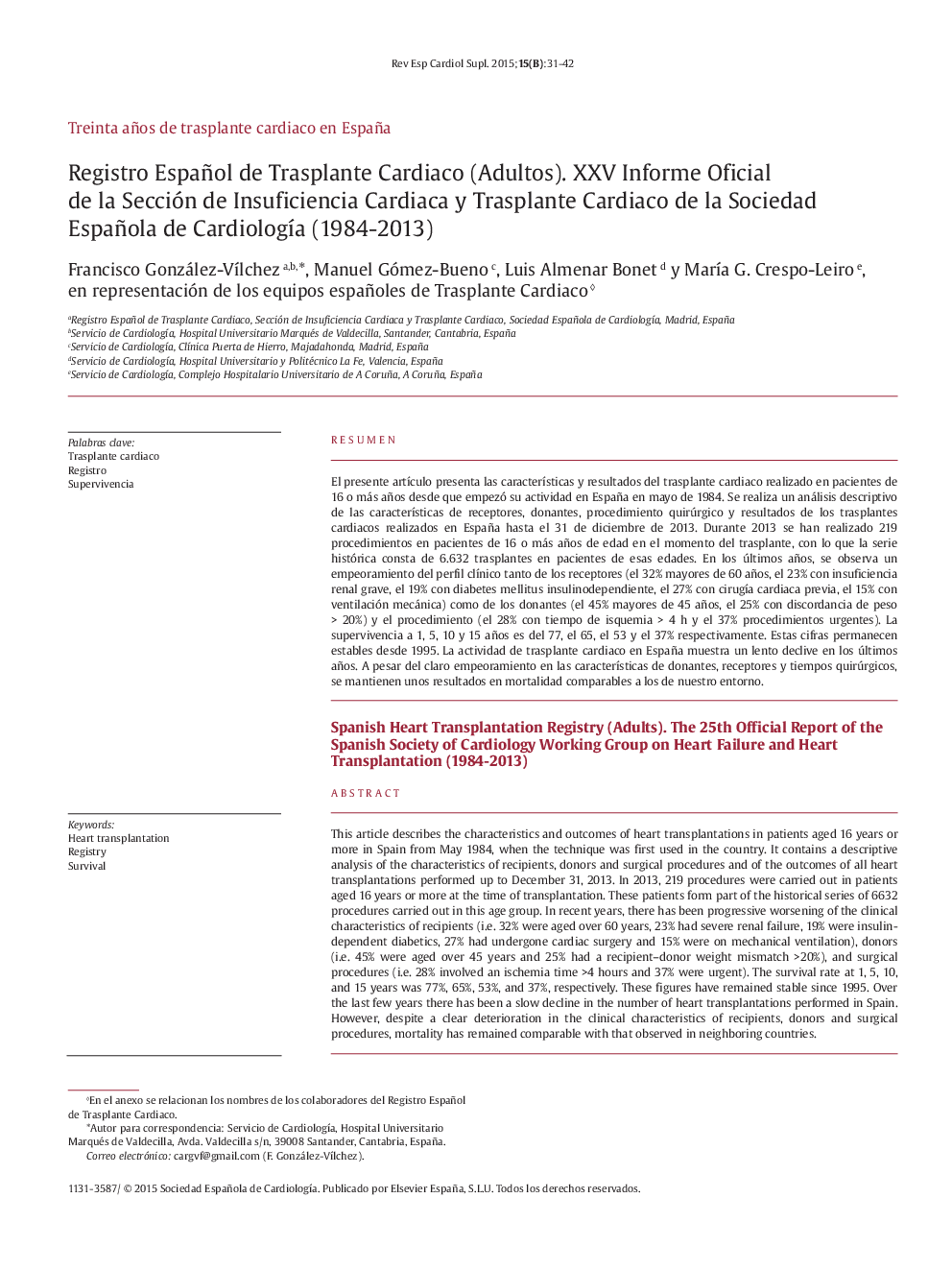| Article ID | Journal | Published Year | Pages | File Type |
|---|---|---|---|---|
| 3019409 | Revista Española de Cardiología Suplementos | 2015 | 12 Pages |
Abstract
This article describes the characteristics and outcomes of heart transplantations in patients aged 16 years or more in Spain from May 1984, when the technique was first used in the country. It contains a descriptive analysis of the characteristics of recipients, donors and surgical procedures and of the outcomes of all heart transplantations performed up to December 31, 2013. In 2013, 219 procedures were carried out in patients aged 16 years or more at the time of transplantation. These patients form part of the historical series of 6632 procedures carried out in this age group. In recent years, there has been progressive worsening of the clinical characteristics of recipients (i.e. 32% were aged over 60 years, 23% had severe renal failure, 19% were insulin-dependent diabetics, 27% had undergone cardiac surgery and 15% were on mechanical ventilation), donors (i.e. 45% were aged over 45 years and 25% had a recipient-donor weight mismatch >20%), and surgical procedures (i.e. 28% involved an ischemia time >4 hours and 37% were urgent). The survival rate at 1, 5, 10, and 15 years was 77%, 65%, 53%, and 37%, respectively. These figures have remained stable since 1995. Over the last few years there has been a slow decline in the number of heart transplantations performed in Spain. However, despite a clear deterioration in the clinical characteristics of recipients, donors and surgical procedures, mortality has remained comparable with that observed in neighboring countries.
Related Topics
Health Sciences
Medicine and Dentistry
Cardiology and Cardiovascular Medicine
Authors
Francisco González-VÃlchez, Manuel Gómez-Bueno, Luis Almenar Bonet, MarÃa G. Crespo-Leiro, en representación de los equipos españoles de Trasplante Cardiaco en representación de los equipos españoles de Trasplante Cardiaco,
